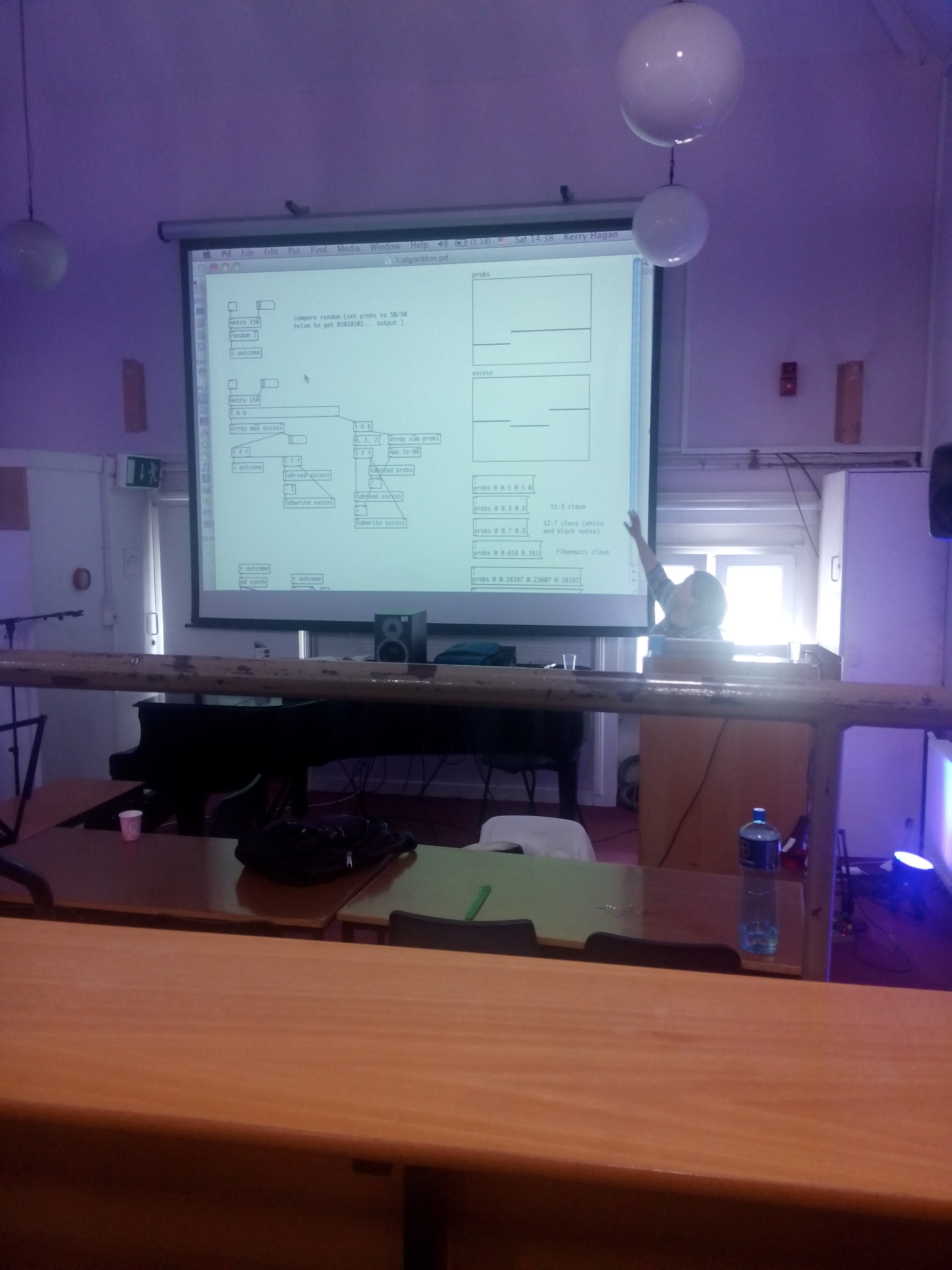A google search for ‘Plunderphonics racist’ returns no relevant results. So here is a rough draft to address that.
Plunderphonics is a tape cutup movement invented by John Oswald. Of course, doing tape cut up pieces from pop culture ephemera and applying tape music techniques to these sources was already occurring. For example State of the Union Message by Ruth Anderson had come out some time previously. As had Bye Bye Butterfly by Pauline Oliveros, who, like Oswald, drew all her material for that from a single song. I think its fair to say that his name recognition and subsequent musical career owes a lot to having got into the charts.
Oswald’s charting record does contain musical merit. Pretender, based on Dolly Parton’s recording of The Great Pretender pulls out hidden depth and vocal timbres in her voice. The choice of material is especially clever, given the rich timbres of her voice. This richness makes her slowed voice a convincing baritone. The program notes suggest that she is secretly a a drag queen (or trans woman), suggesting her femininity is so over the top, it must be self-consciously performative. Indeed, Ms. Parton does not seem to object to this interpretation of her gender presentation. She once entered a drag contest dressed as herself and has repeatedly identified with gay men, as well as been open about the bodily transformations she has undertaken to present her image.
That piece appeared on an earlier EP as well as the one that charted. The one that charted also featured Dab a remix of Michael Jackson’s Bad. the program notes on the Plunderphonics website note that “This is probably the most complicated piece on the album.” And talk about the structure. Officially, it was the copyright violations inherent in this piece that lead to the record eventually being suppressed. Oswald was sued by Jackson and his record label, who forced him to destroy all copies in circulation, never offer the record for sale and never to distribute it in any of the formats that existed at the time. As this was before the web, he has taken advantage of MP3s not being listed to upload the album and its cover image to his website.
However, it was almost certainly the cover image which lead Jackson to sue. The album cover is a modification of the cover of the Bad album, except the iconic image of Jackson in a leather jacket has been manipulated so it shows the jacket slightly open to reveal the torso of a naked white woman.
This album was never on sale. Instead, he sent it to college radio stations across Canada. These stations were influential. Getting a lot of college radio play could get an artist into the charts, which it did for Oswald. Because college radio stations offer a way to get in to the music industry, they used to receive a very high number of promotional recordings – many more than the staff could hope to play on the air or often even listen to and evaluate. This staff was made up of college students who tended to be mostly white men between the age of 18-22. Oswald’s crass joke about Jackson’s race and gender would have appealed to many of these young men, who then took the time to listen to the record and discover it had musical merit.
Although the image was unsubtly racist, there was no trace of that in the audio. Thus, only the DJs saw the image, not the public who came to like his skilfully produced music. Oswald was therefore able to very cannily employ racism as a path to a successful career.
He has cast himself consistently as the victim of corporate bullying, picked on by a superstar out to bankrupt him. However, despite his losing battle with one record company, he has since been commissioned by record companies to do remixes of work in their back catalogues. The lawsuit has hardly destroyed him, but instead, cast him into a victim role which has thus far seemingly prevented any discussion of his own use of structural power against Jackson. Oswald may have been disadvantaged in terms of industry connections, but, as his record cover reminds us, he is a cis white man and therefore, empowered to police the otherness of black people who do not adequately conform to racial and gender stereotypes.
Oswald is not somebody who happens to have done a racist thing. Oswald is someone who owes his entire career to successfully deploying racism. The Plunderphonics cover is not dog whistle racism – it is clearly, indisputably racist. He has never apologised for this and in interviews has doubled down, going so far as to say that Jackson’s body modifications mean that he should have no right to control his own image. He’s framed this in terms of copyright, but the message is clear enough.
As a music tech teacher, Plunderphonics often appears on course syllabuses. Everywhere I’ve taught, the undergrads have included a significant minority of BME/PoC students. Their presence is much rarer doing postgraduate degrees. The number of black composers doing non-pop electronic music is worryingly low and suggest that there are structural issues dissuading people from carrying on in art music. I don’t think covering Oswald helps with this. I also have objections in silently participating in a system where he continues to benefit from his past deployment of racism and transphobia, especially given the absence of any kind of apology.
The success of Plunderphonics is racist and transphobic. I’m going to cover other remix artists instead.
